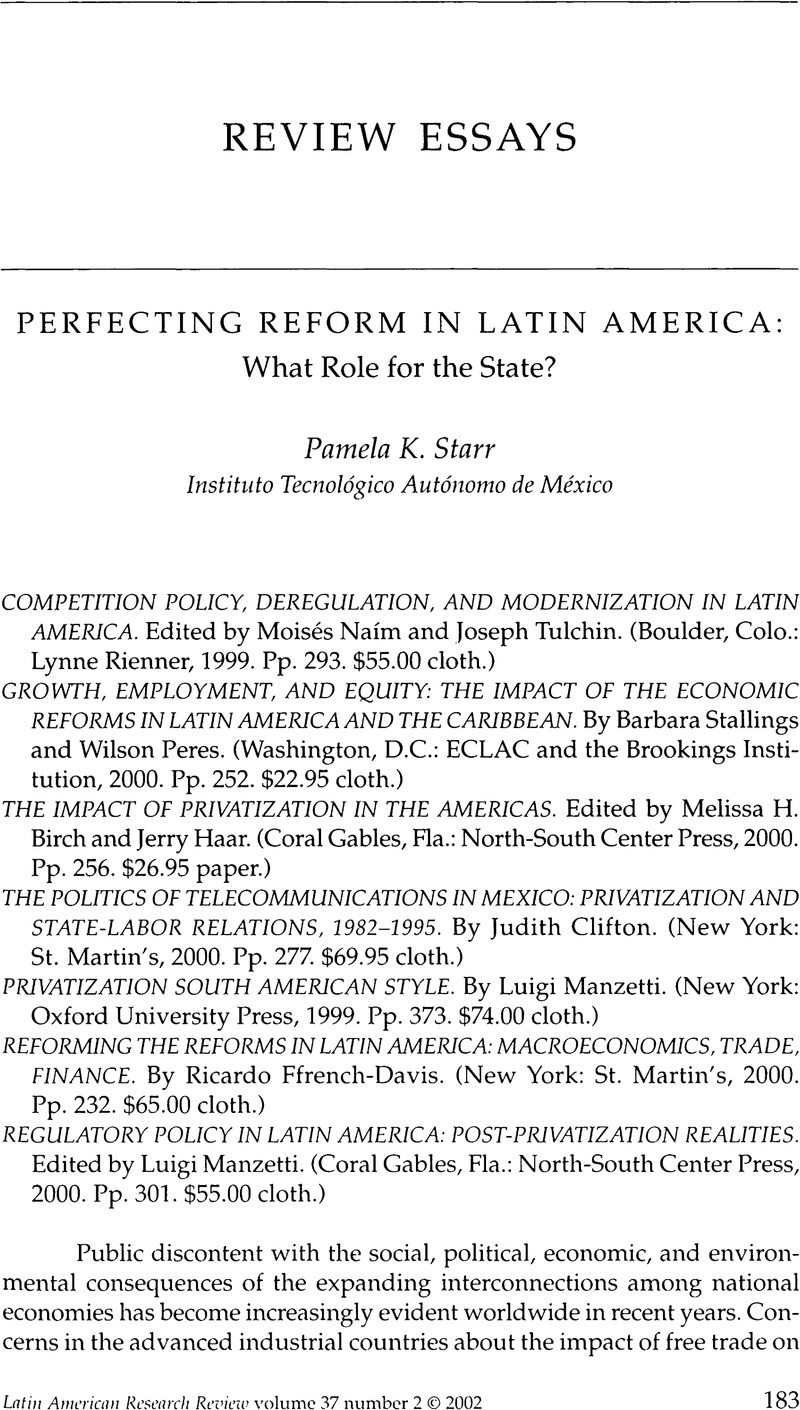Published online by Cambridge University Press: 05 October 2022

1. The debate among economists regarding the best economic strategy for promoting growth in Latin America extends beyond this neoclassical-neostructuralist dichotomy. Strictly speaking, the third school of thought is the neo-Keynesian approach. Neoclassical economists argue that the best policy mix for Latin America is to privatize and liberalize and let the market take care of itself. Neo-Keynesians argue that Latin America should privatize, liberalize, and regulate because markets need government intervention to help complete incomplete markets and to ensure the competitive conditions that help mitigate other kinds of market failures. Neostructuralists insist that Latin America must privatize, liberalize, and intervene directly in market operations because market outcomes do not address inequalities effectively. Based on this typology of economic strategies, ECLAC economists fall into the neo-Keynesian category, with a tilt toward neostructuralism. For simplicity, however, and because Ffrench-Davis describes himself as an updated structuralist, in this essay I have categorized both neo-Keynesians and neostructuralists under the neostructuralist label.
2. Robert Devlin, Ricardo Ffrench-Davis, and Stephany Griffith-Jones, “Surges in Capital Flows and Development: An Overview of Policy Issues,” in Coping with Capital Surges: The Return of Finance to Latin America, edited by Ricardo Ffrench-Davis and Stephany Griffith-Jones (Boulder, Colo.: Lynne Rienner, 1995), 257.
3. World Bank, World Development Report, 1997: The State in a Changing World (Washington, D.C.: World Bank, 1997).